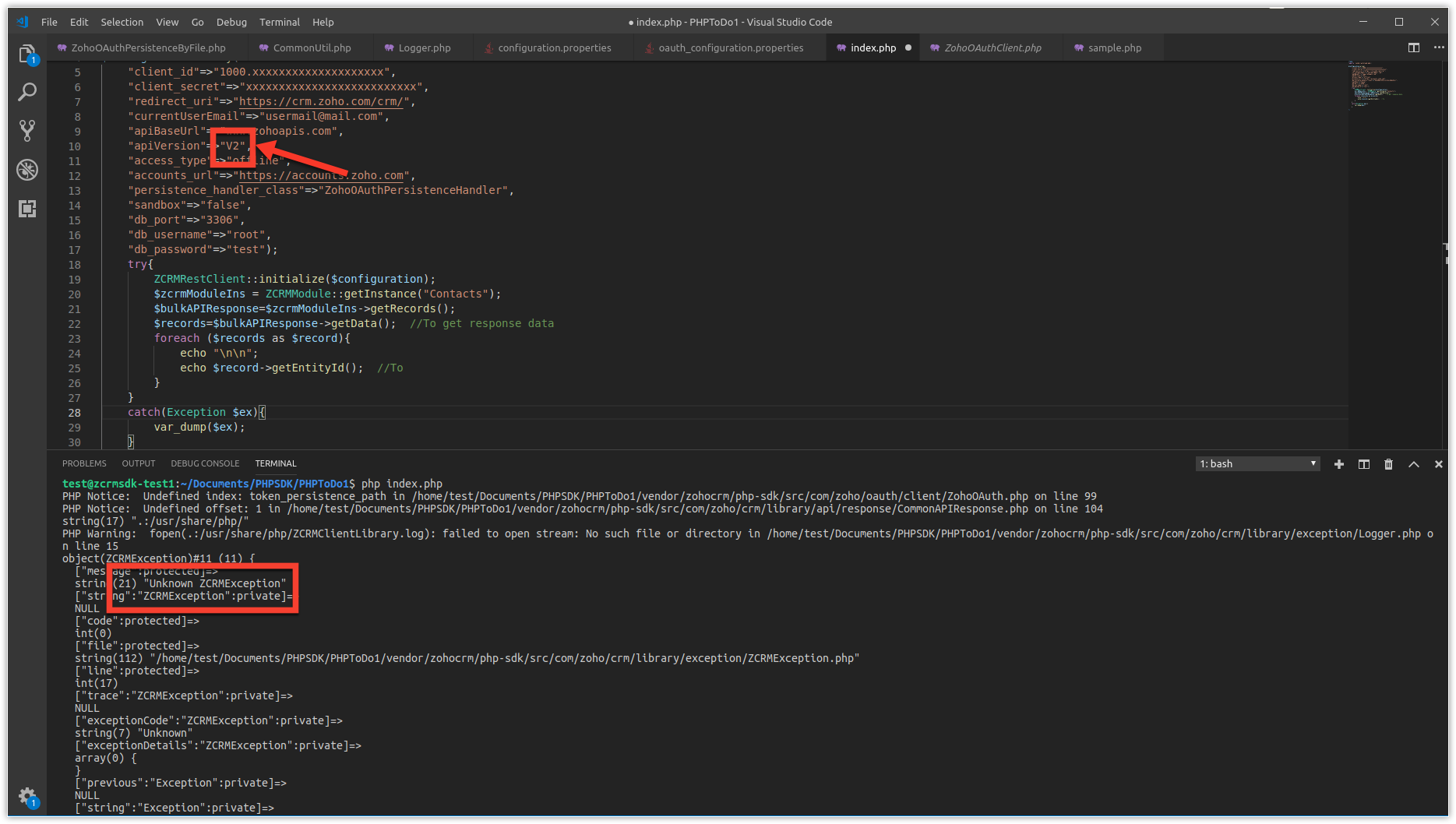Suitecrm Api Oauth Unable To Generate Private Key
- Suitecrm Api Oauth Unable To Generate Private Key West
- Suitecrm Api Oauth Unable To Generate Private Key From Public Key
- Suitecrm Api Oauth Unable To Generate Private Key For Putty
Overview
I'm fairly new to OAuth but have done some PKI in the past. Can anyone point me to some example on how to generate a OAuth token, application secret using public/private key? Google didn't turn up. To sign an assembly with a strong name, you must have a public/private key pair. This public and private cryptographic key pair is used during compilation to create a strong-named assembly. You can create a key pair using the Strong Name tool (Sn.exe).
To use the Google Fit for Android, you need an OAuth 2.0 client ID forAndroid applications.
All Android apps are signed with a digital certificate for which you hold theprivate key. Refer to the Android guide to signing your applicationsfor more information about digital certificates.
Android OAuth client IDs are linked to specific certificate/package pairs. Youonly need one ID for each certificate, no matter how many users you have forthe app.
Getting an ID for your app requires several steps. These steps are outlinedbelow.
- Find your app's certificate information.
- Create or modify a project in the Google API Console.
- Request an OAuth 2.0 client ID.
Find your app's certificate information
The API key is based on a short form of your app's digital certificate, known as its SHA-1 fingerprint. To display the SHA-1 fingerprint for your certificate, first ensure that you are using the right certificate. You may have two certificates:

- A debug certificate: The Android SDK tools generate this certificate automatically when you do a debug build. Only use this certificate with apps that you're testing. Do not attempt to publish an app that's signed with a debug certificate. The debug certificate is described in more detail in Signing in Debug Mode in the Android Developer Documentation.
- A release certificate: The Android SDK tools generate this certificate when you do a release build. You can also generate this certificate using the
keytoolprogram. Use this certificate when you are ready to release your app to the world.
Follow the steps below to display a certificate's SHA-1 fingerprint using the keytool program with the -v parameter. For more information about Keytool, see the Oracle documentation.
Displaying the debug certificate fingerprint
Locate your debug keystore file. The file name is
debug.keystore, and is created the first time you build your project. By default, it is stored in the same directory as your Android Virtual Device (AVD) files:- macOS and Linux:
~/.android/ - Windows Vista and Windows 7:
C:Usersyour_user_name.android
- macOS and Linux:
List the SHA-1 fingerprint: Cd key cs 1.6 generator.
For Linux or macOS, open a terminal window and enter the following:
For Windows Vista and Windows 7, run:
You should see output similar to this:
Suitecrm Api Oauth Unable To Generate Private Key West
-->
To sign an assembly with a strong name, you must have a public/private key pair. This public and private cryptographic key pair is used during compilation to create a strong-named assembly. You can create a key pair using the Strong Name tool (Sn.exe). Key pair files usually have an .snk extension.
Note
In Visual Studio, the C# and Visual Basic project property pages include a Signing tab that enables you to select existing key files or to generate new key files without using Sn.exe. In Visual C++, you can specify the location of an existing key file in the Advanced property page in the Linker section of the Configuration Properties section of the Property Pages window. The use of the AssemblyKeyFileAttribute attribute to identify key file pairs was made obsolete beginning with Visual Studio 2005.
Create a key pair
To create a key pair, at a command prompt, type the following command:
sn –k <file name>
In this command, file name is the name of the output file containing the key pair.
The following example creates a key pair called sgKey.snk.
If you intend to delay sign an assembly and you control the whole key pair (which is unlikely outside test scenarios), you can use the following commands to generate a key pair and then extract the public key from it into a separate file. First, create the key pair:
Next, extract the public key from the key pair and copy it to a separate file:
Once you create the key pair, you must put the file where the strong name signing tools can find it.
When signing an assembly with a strong name, the Assembly Linker (Al.exe) looks for the key file relative to the current directory and to the output directory. When using command-line compilers, you can simply copy the key to the current directory containing your code modules.
Suitecrm Api Oauth Unable To Generate Private Key From Public Key
If you are using an earlier version of Visual Studio that does not have a Signing tab in the project properties, the recommended key file location is the project directory with the file attribute specified as follows: